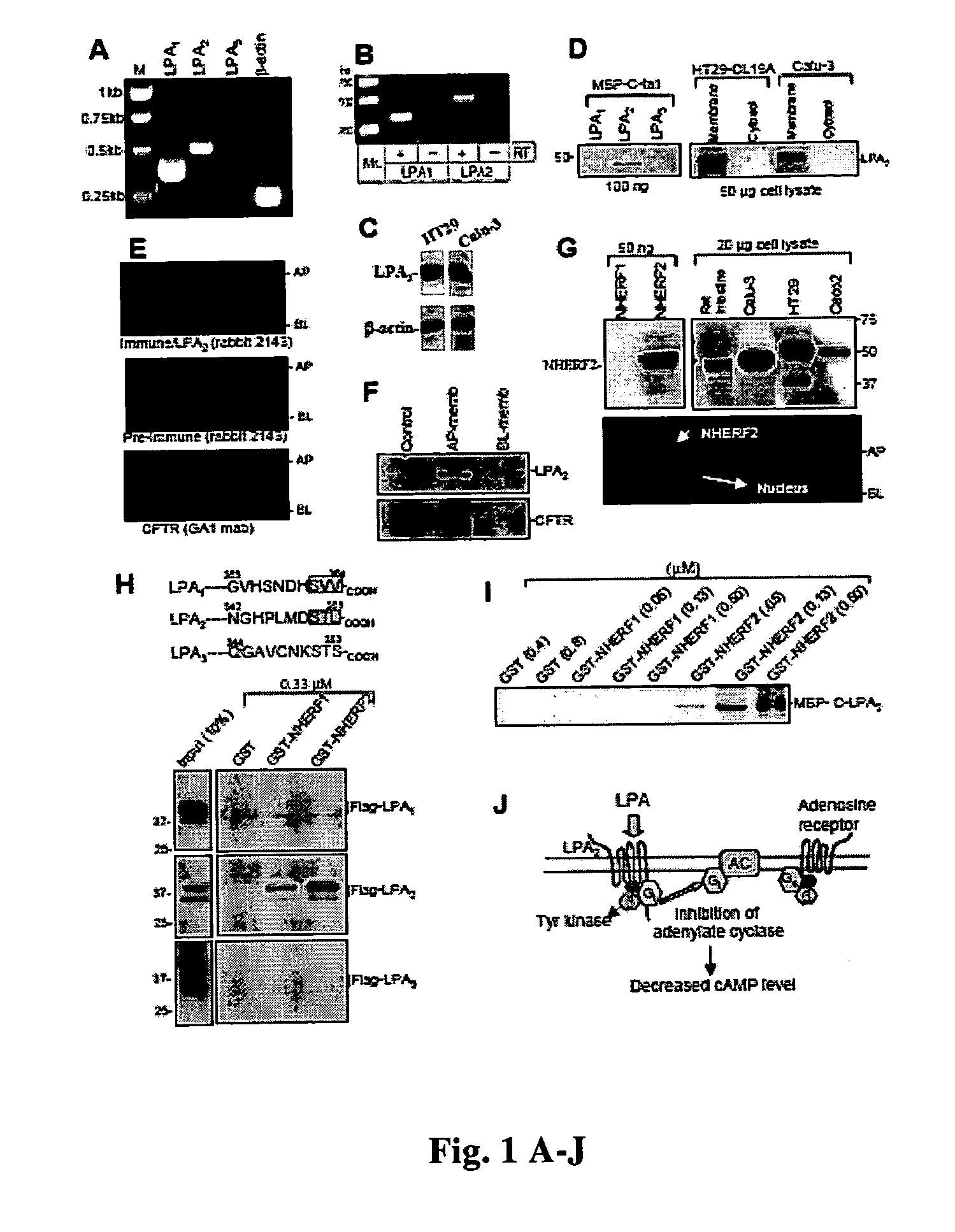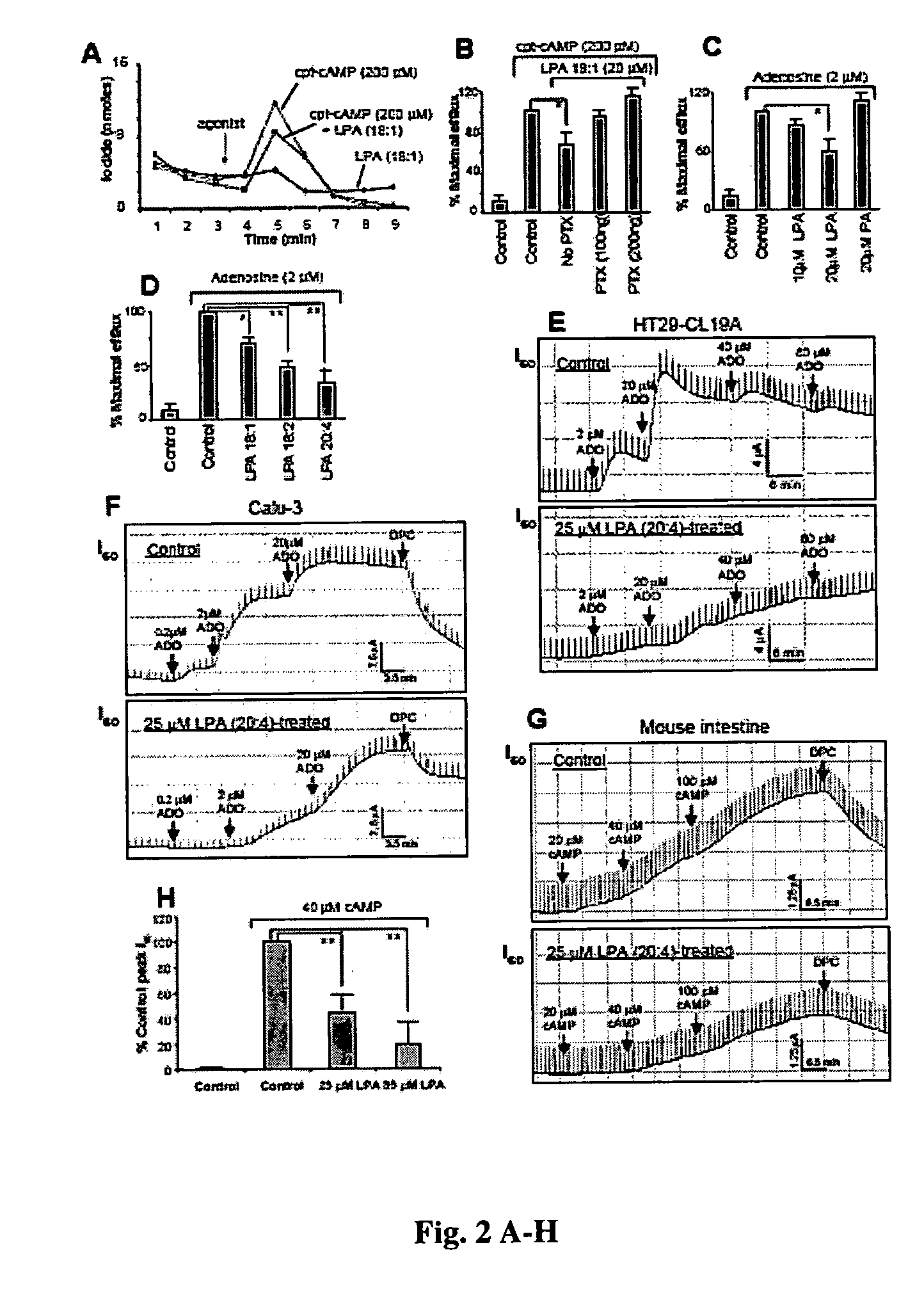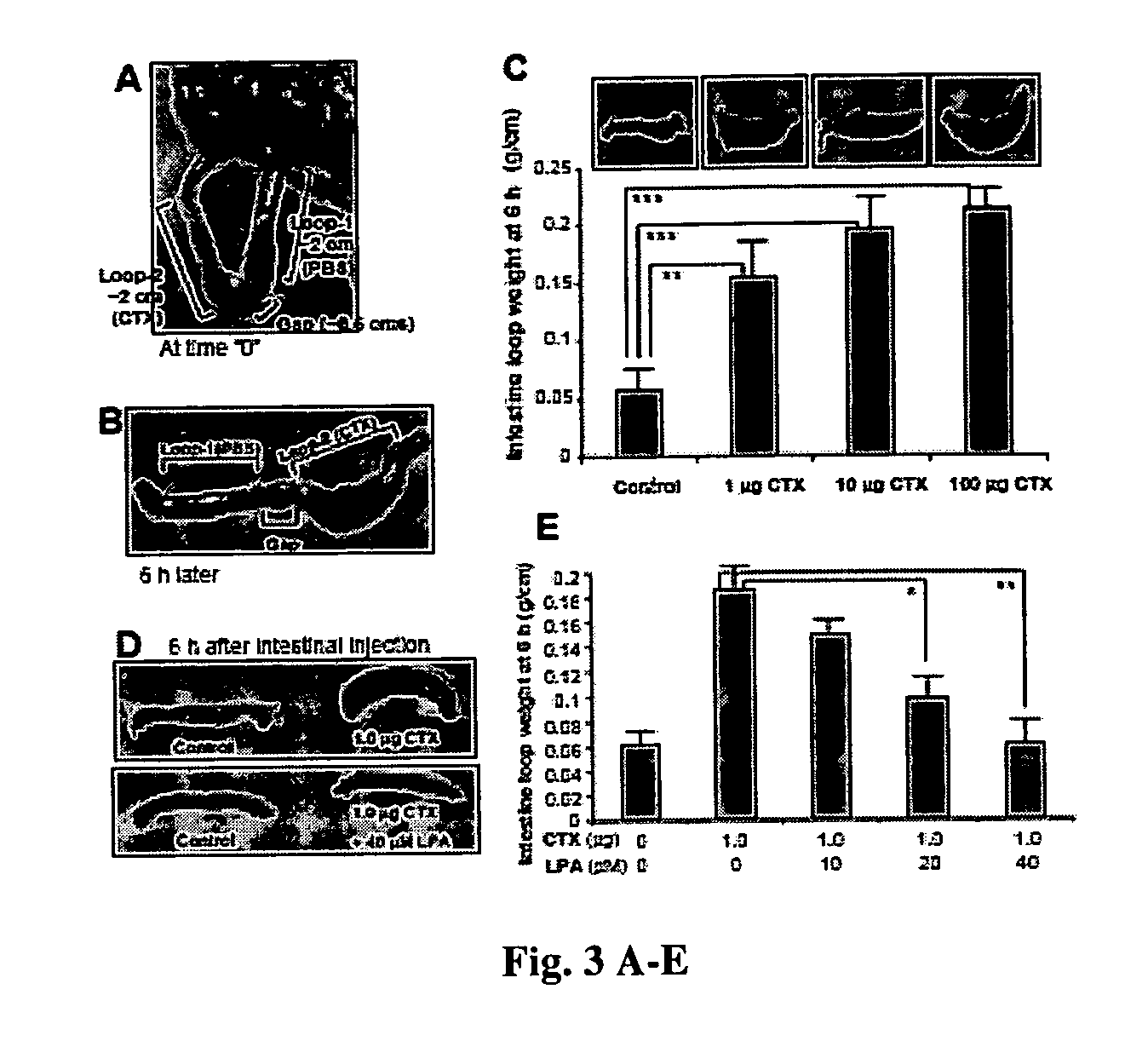LPA2 receptor agonist inhibitors of CFTR
a technology of lpa2 receptor and inhibitor, which is applied in the direction of antibacterial agents, phosphorous compound active ingredients, immunological disorders, etc., can solve the problems of insufficient insufficient to save the patient's life, and inability to provide sufficient quantities of potable water for treatment, etc., to achieve the effect of preventing or treating diarrhea, restoring or maintaining electrolyte balance, and inhibiting cftr activity
- Summary
- Abstract
- Description
- Claims
- Application Information
AI Technical Summary
Benefits of technology
Problems solved by technology
Method used
Image
Examples
example 1
Localization of LPA Receptors in Intestinal Tissue
[0051] LPA1 and LPA2, but not LPA3 transcripts, were present in mouse intestinal tissue (FIG. 1, A and B), and using human sequence-specific oligos for LPA2, HT29-CL19A (colonic epithelial cells) and Calu-3 (serous gland epithelial cells) were also found to express LPA2 (FIG. 1C). Using an LPA2-specific antibody (FIG. 1D, left), the expression of LPA2 in plasma membranes prepared from HT29-CL 19A and Calu-3 cells (13) was verified. LPA2 appeared as a major immunoreactive band of ˜50 kD (FIG. 1D, right).
[0052] LPA2 was next colocalized in part to the apical surface of HT29-CL19A (FIG. 1E, top) using fluorescence confocal microscopy (14). Apical localization of LPA2 was also confirmed using surface biotinylation (FIG. 1F, top) (13). The LPA2 interacting partner NHERF2 (15) was expressed at various levels in epithelial cells (HT29-CL19A, Calu-3, etc.) and appeared as a ˜50-kD immunoreactive band (FIG. 1G, upper right). NHERF2 was also...
example 2
LPA2 Receptor Interaction with NHERF2 and CFTR
[0053] The C-terminal tails of LPA1 and LPA2, but not LPA3, contain a consensus for the PDZ (PSD95 / Dlg / ZO-1) motif, the short COOH-terminal protein sequences that specifically interact with the PDZ-binding domains (usually ˜70-90 amino acid sequences) of PDZ proteins (16) (FIG. 1H, upper, boxed area). Thus, LPA1 and LPA2 are likely candidates for PDZ-domain containing proteins to interact and regulate the receptor function. Pull-down assay demonstrated that LPA2 bound NHERF2 with the highest affinity, whereas LPA1 bound with rather weak affinity (FIG. 1H) (15). A direct interaction between the C-tail of LPA2 and NHERF2 was also demonstrated (FIG. 1I).
[0054] Although all three LPA receptors (LPA1, LPA2, and LPA3) respond to LPA, LPA2 has the highest affinity to the lipid (17), leading to the activation of at least three distinct G-protein pathways: Gi, Gq, and G12 / 13 (6, 7). Activation of the receptors by LPA results in inhibition of th...
example 3
LPA Inhibition of CFTR Function is Receptor-Mediated
[0055] To test the hypothesis that the inhibition of CFTR function by LPA is receptor-mediated, Calu-3 cells were pretreated with pertussis toxin (PTX), which has been demonstrated to catalyze the ADP-ribosylation of the Gαi subunit, thus specifically disrupting the Gi pathway (21). PTX pretreatment reversed LPA-dependent inhibition of CFTR function in a dose-dependent fashion (FIG. 2B). It is therefore likely that inhibition of CFTR function by LPA is receptor-mediated through Gi pathway. A dose-dependent inhibition of CFTR activity by LPA was also observed when adenosine was used as CFTR agonist (FIG. 2C). In contrast, the related lipid, phosphatidic acid (PA), which is not a ligand for LPA receptors (5), did not show any significant effect on CFTR function (FIG. 2C). Several fatty acid analogs of LPA were screened, and the rank order of inhibition was LPA 20:4>LPA 18:2>LPA 18:1 (FIG. 2D), which matches the relative abundance of...
PUM
| Property | Measurement | Unit |
|---|---|---|
| Volume | aaaaa | aaaaa |
| Molar density | aaaaa | aaaaa |
| Molar density | aaaaa | aaaaa |
Abstract
Description
Claims
Application Information
 Login to View More
Login to View More - R&D
- Intellectual Property
- Life Sciences
- Materials
- Tech Scout
- Unparalleled Data Quality
- Higher Quality Content
- 60% Fewer Hallucinations
Browse by: Latest US Patents, China's latest patents, Technical Efficacy Thesaurus, Application Domain, Technology Topic, Popular Technical Reports.
© 2025 PatSnap. All rights reserved.Legal|Privacy policy|Modern Slavery Act Transparency Statement|Sitemap|About US| Contact US: help@patsnap.com



